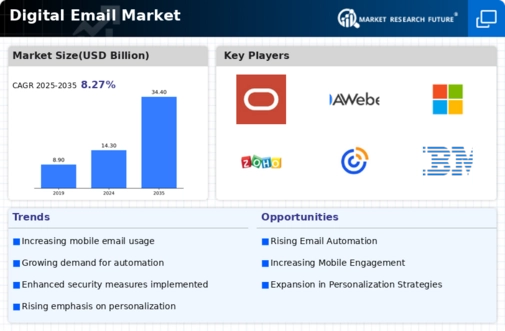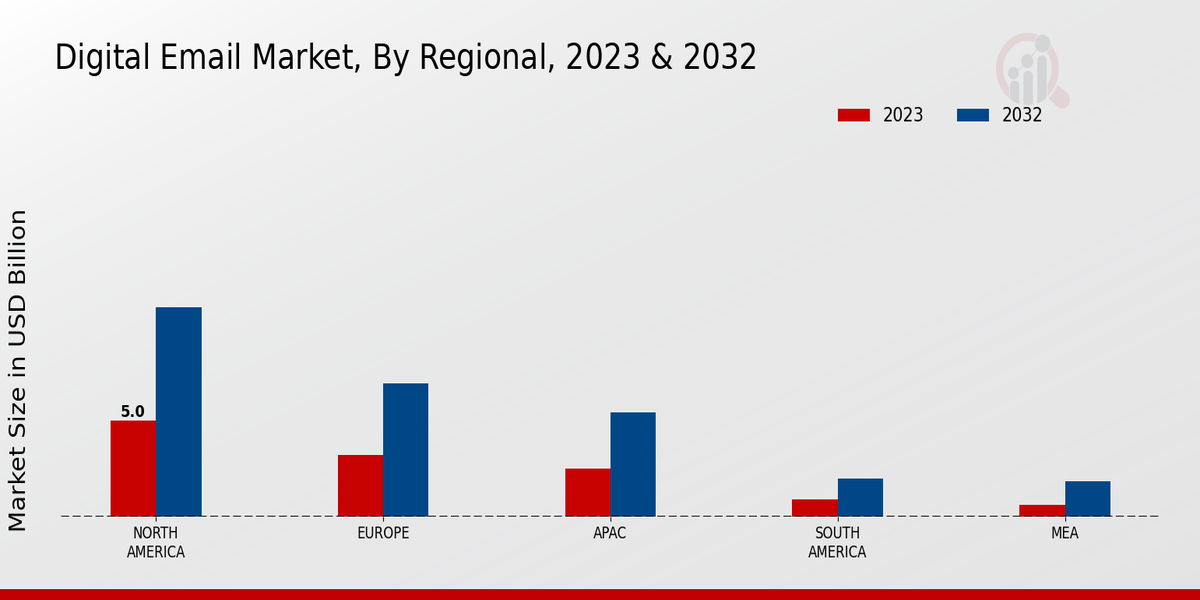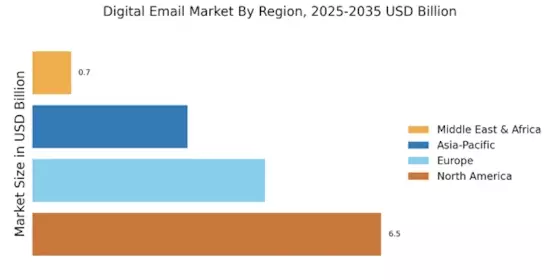Growing Emphasis on Data Analytics
Data analytics is becoming increasingly vital within the Digital Email Market. Organizations are leveraging data to gain insights into customer behavior, preferences, and engagement patterns. This analytical approach enables businesses to refine their email marketing strategies, ensuring that content is relevant and timely. Reports indicate that companies utilizing data-driven email marketing strategies can achieve up to 20 percent higher revenue than those that do not. As the importance of data analytics continues to rise, the Digital Email Market is expected to evolve, with businesses prioritizing data collection and analysis to enhance their email marketing effectiveness.
Increased Focus on Mobile Optimization
The Digital Email Market is witnessing a significant shift towards mobile optimization. With the proliferation of smartphones, a substantial portion of email interactions now occurs on mobile devices. Recent statistics reveal that nearly 60 percent of all emails are opened on mobile, underscoring the necessity for businesses to optimize their email content for mobile viewing. This trend compels marketers to adopt responsive design and ensure that emails are visually appealing and functional across various devices. As mobile optimization becomes a priority, the Digital Email Market is likely to see a transformation in how email campaigns are designed and executed.
Rising Demand for Digital Communication
The Digital Email Market is experiencing a notable surge in demand for digital communication solutions. As businesses increasingly recognize the importance of effective communication, the reliance on email as a primary channel continues to grow. Recent data indicates that over 90 percent of professionals utilize email for business communication, highlighting its critical role in organizational operations. This trend is further fueled by the expansion of remote work and the need for efficient collaboration tools. Consequently, the Digital Email Market is poised for growth as companies seek to enhance their communication strategies, streamline workflows, and improve customer engagement through targeted email campaigns.
Advancements in Email Marketing Technologies
Technological advancements are significantly shaping the Digital Email Market. Innovations such as artificial intelligence and machine learning are enabling marketers to create more personalized and effective email campaigns. These technologies allow for better segmentation, targeting, and automation, which can lead to higher open and conversion rates. For instance, studies suggest that personalized emails can increase transaction rates by up to six times. As businesses continue to adopt these advanced marketing technologies, the Digital Email Market is likely to witness increased investment and growth, as companies strive to optimize their email marketing efforts and achieve better results.
Regulatory Changes and Compliance Requirements
The Digital Email Market is increasingly influenced by regulatory changes and compliance requirements. With the introduction of data protection laws, such as the General Data Protection Regulation (GDPR), businesses must navigate complex legal landscapes to ensure compliance in their email marketing practices. These regulations necessitate transparency in data collection and usage, compelling organizations to adopt best practices in email marketing. As companies strive to adhere to these regulations, the Digital Email Market may experience shifts in strategies, with a greater emphasis on ethical marketing practices and consumer trust.



















Leave a Comment